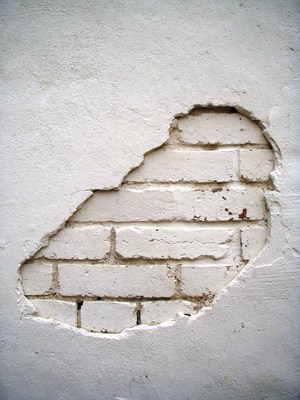Ceramic molds are expensive and fragile. Mold manufacturers estimate that in general only ten casts can be made from a mold before it begins to decay and lose detail. But there are a few simple tricks that can make your molds last longer, saving you money and allowing you to produce more greenware from each mold. And if you are casting for profit, you can cut your production costs by not having to replace your molds as often.
A ceramic mold is made of plaster of Paris. It works by pulling moisture from the slip into itself to harden the greenware so it can be removed. But as plaster of Paris gets wet, it begins to disintegrate, which is the primary cause of loss of detail. The steps below will help you to minimize the damage water can do to your mold.
First, unless it is absolutely necessary, do not use your mold more than once a day. It takes anywhere from several hours to more than a day for a mold to dry. Re-using a wet mold causes a great deal of damage to your mold, and cause it to deteriorate much faster. If you have a popular mold and need to make several pieces of the same greenware at a time, consider buying two or more copies of the same mold. That way, one can be “resting” while you use the other one. There are also ways to help your mold dry more quickly. Place a sheet of plasterboard, the kind used in building interior walls, on a table. Place your damp mold on the plasterboard, which will pull the moisture out of the mold. You can also use a hair dryer on small molds to help them dry more quickly.
One of the most common mistakes I have seen casters make is to lay wet molds out without rebanding them. As the mold dries, it tends to warp, which causes increasingly wider gaps in the seams Letting the mold dry with its pieces banded together minimizes the warping and keeps the seams narrow.
Keep your mold clean, especially at the joints. When dried slip is allowed to accumulate in the seams, it causes the mold halves to fit together poorly, causing wide seams which have to be removed, and contributing to poorer quality finished greenware. After the mold is used, carefully clean it while the slip residue is still damp. Use a damp, soft cloth to gently brush the residue away from the inside of the mold. Don’t scrub the mold or you will remove too much plaster, and don’t let the damp cloth touch the inside surfaces of the mold. The residue will cause your casting to stick in the mold. Your cast will be damaged when you finally remove it and small amounts of detail will also be lost. When you’ve finished cleaning your mold, reband it and set it aside to dry.
Sooner or later, a casting will get stuck in the mold. When that happens, carefully remove it completely from the mold. Then wipe the mold surface VERY gently with a damp, soft cloth. Try to wipe only the section of mold which actually has residue without touching the other parts of the surface. Reband the mold and set it aside to dry thoroughly. Before you use it again, dust the inside portions of the mold with a tiny amount of baby powder. Use a soft, dry brush (a makeup brush works nicely) to gently work the powder into the details. Then blow or shake away any excess powder. The next greenware you create from that mold may have a tiny amount of powder residue left on its surface, but that will burn off harmlessly during firing. If the next casting still sticks in the mold, repeat the process one more time.
By using the secrets I have outlined above, you will find that your molds last much longer and you produce better castings. Now, I have one or two more secrets to share. If you are casting greenware to use yourself, it is much easier and faster to clean your project before the piece dries. After you have removed it from the mold, while it is still in the form known as “leather,” you can use a wet finger or paintbrush to smooth the mold marks around the edges of your piece. Usually, this takes only a few minutes to do, and you will save a substantial amount of time. You can also correct any dings or errors that occurred as you removed your greenware from the mold, or if you have accidently bumped it. Use a paintbrush and some slip to fill in holes or cuts, then smooth them out. You will find that this is much easier than trying to mix and apply dried slip.
I hope these tips and trips help you, whether you are casting for pleasure or for profit. We used them in our own ceramics shop and one customers claimed that our greenware was the best in town.


